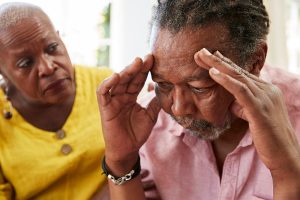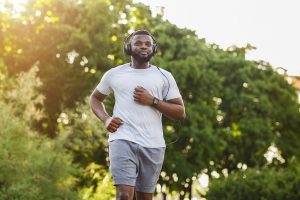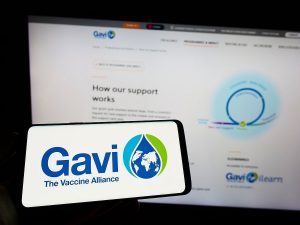WEDNESDAY, June 16, 2021 (American Heart Association News) — Veronica Cardello hopped in the shower on a Tuesday morning, her thoughts drifting to the full slate of meetings awaiting her at work. Picking up her shampoo bottle, it slipped through her fingers.
“Every time I went to grab for it, I just dropped it,” said Veronica, who works as an advocate for real estate agents. “I remember blinking and thinking to myself, ‘Maybe I’m just tired.'”
Then she collapsed, falling face forward onto the edge of the bathtub. She blacked out. When she came to, she couldn’t feel her right side. A huge bruise already had formed across her midsection. Veronica crawled out of the tub. Clutching the sink, she reached for the door handle, only to fall backward, smacking her head on the edge of the tub.
“I started crying,” she said. “I couldn’t do anything. I couldn’t get up, I couldn’t talk. It was at that moment that I was beyond scared for my life.”
Veronica was 27. She was living in her childhood home in Forestville, Pennsylvania, with her parents and three younger siblings while her home was being renovated. As time passed that morning, her father, John, thought it odd she hadn’t yet left for work.
When he went upstairs to check on her, the door was closed. He got no answer when he knocked and so he shouted, “Nica! Nica! Are you OK?”
Veronica, still in the bathroom, “just kept moaning because I couldn’t do anything else.”
John called to his other daughters, Kimberly and Nicole. They helped get Veronica from the bathroom to the bedroom.
As they dressed Veronica, she regained her ability to speak. She said she didn’t want to go to the hospital.
But John worried about the choppy way his daughter spoke. He noticed the right side of her face was drooping. He knew these were stroke symptoms. “There are no ifs, ands or buts about it, you’re going to the hospital to be checked out,” he told her.
At the hospital, an X-ray and CT scan both came back normal. Veronica was weak, but she could move around with help. She was speaking more clearly. Abnormal results on a urine test led to a diagnosis of a bacterial infection. She was sent home.
“I left the hospital thinking it was just a freak accident,” Veronica said.
Two days later, she still felt numbness in her right arm and leg. She was struggling to find the right words when speaking. Her primary care doctor ordered an MRI.
The next day her doctor called and said: “I need for you to be sitting down right now. You have every symptom of having had a stroke.”
But what caused it? Over the next eight months, doctors struggled to figure it out.
“Test after test proved that I was ‘normal,'” she said, “until one doctor was brave enough to take a closer look.”
An ultrasound of her heart solved the mystery. Veronica was born with a hole between the upper chambers of her heart. It’s called an atrial septal defect.
“Until they diagnosed me, I thought I was dying,” Veronica said.
Doctors said the hole could lead to another stroke; it needed to be surgically closed. A doctor in Virginia ended up essentially sewing her heart together. She then spent weeks recovering, nursed by her parents and siblings.
“I couldn’t lift anything over 10 pounds,” Veronica said.
Veronica’s stroke was in June 2019. Her heart procedure was in October 2020.
Ever since, she’s been devoted to a healthy lifestyle. She eats a Mediterranean diet, runs and lifts weights.
The stroke has left her with occasional struggles to retrieve words. She also gets stiff and sore when sitting for a long time.
Veronica has become active with the American Heart Association and enjoys educating others, especially young people, about strokes.
“Don’t doubt it can happen to you,” she said. “That’s absolutely one of the biggest pieces of advice I would have given myself two years ago.”
She urges fellow survivors to stay strong.
“It’s very scary to go through,” she said, “but you can overcome it.”
American Heart Association News covers heart and brain health. Not all views expressed in this story reflect the official position of the American Heart Association. Copyright is owned or held by the American Heart Association, Inc., and all rights are reserved. If you have questions or comments about this story, please email editor@heart.org.
By Deborah Lynn Blumberg
Copyright © 2025 HealthDay. All rights reserved.

















